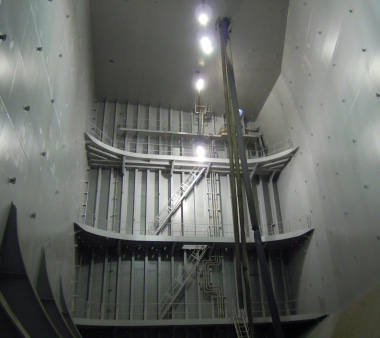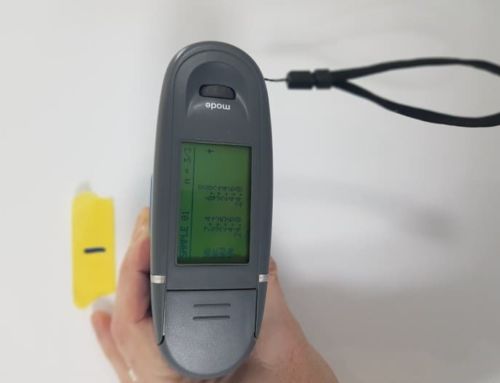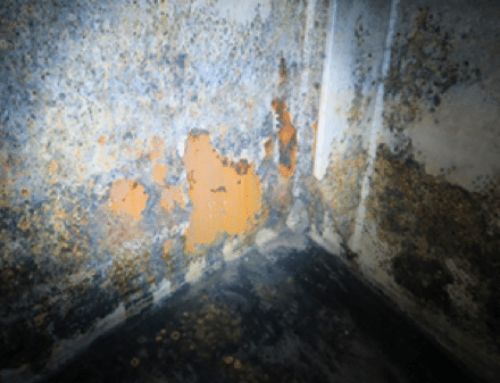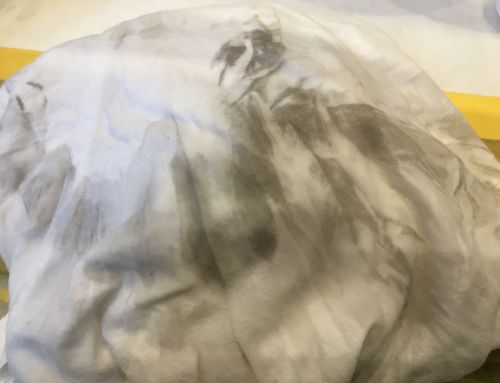Approximately 10 years ago Joop Ellenbroek published several articles in Superyacht Report about tank coatings in superyachts – an “often forgotten subject’ in our industry. Although some shipyards have significantly increased their attention to tank linings since then, we still regularly encounter tanks with serious coating problems, even after relatively short periods in service. This article will pinpoint the reasons for the relatively high failure rate of superyacht tank coatings in comparison to the commercial shipping world. It will also delve deep into the procedures and methods that need to be put in place to make tank coatings on superyacht perform as they’re intended to.

Believe it or not but these pictures were taken in various tanks after a service period of only one to two years.
The issues we tend to see are:
- Corrosion on edges and welds, primarily caused by a lack of dry film thickness (DFT), abrasive material embedded in the paint or poor surface treatment.
- Blistering caused by solvent retention, trapped moisture, trapped air, osmosis or water-soluble contamination.
- Cratering caused by trapped air.
- Flaking and delamination primarily caused when the overcoating time between paint layers has been exceeded.
- Pinholes caused by solvent or air entrapment.
- Runs, sags and curtains caused by over-application.
Most of these problems would have been easily avoided if the coating job was professionally supervised, a fairly common procedure in commercial shipping. Not only are professional inspections conducted during the preparation and paint application phases, close cooperation between the (sub)contractors and paint suppliers almost ‘guarantees’ an optimum performance.
By taking these measures the shipyards acknowledge that properly performing tank coatings are essential for the ship’s operation. In the superyacht industry that emphasis is sometimes missing and the situation is often quite different:
- Technical assistance from the paint suppliers is non-existent or very limited. The volume of paint is relatively minor and it doesn’t make economic sense to the paint manufacturers to allocate resources.
- If and when there is a yard supervisor for paint matters, his main concern is the exterior fairing/coating system. Moreover, knowledge of tank coating applications is often very limited.
- The paint (sub) contractors are in most cases not tank coating specialists.
- Superyacht holding tanks are typically smaller than the ones seen on commercial vessels. That increases the complexity of preparation and paint application work. Accessability is also often a problem.
- And last but not the least: the owner’s building team generally lacks the knowledge to identify flaws in the preparation and application processes when supervising during a newbuild or refit.

Superyacht tanks are not nearly as big as some seen on commercial vessels. Space can be limited making paint preparation and application difficult.
These conditions are not favourable to achieve tank coatings with a performance as seen in the commercial shipping industry. For instance, a properly applied tank coating in potable water tanks should last ten years with only minor maintenance, however in the superyacht industry we often see that potable water tanks and in particular grey water tanks will only last a few years.
Making repairs in the tanks of a superyacht is much more complicated than in commercial vessels due to the location of the tanks and the ‘fragile’ and luxurious interiors that are unique to superyachts. Making paint repairs in tanks is a messy affair with hoses, sometimes 40 cms in diameter needed to be led through the interior to the often awkward locations of the tanks. Cutting holes in the hull of the yacht is sometimes the only way to get proper access! Then there’s also the issue of nasty smells and the dangers of solvent vapours inside the yacht’s interior…
Conclusion: it is a matter of common sense to make sure that the tank coatings in yachts are properly applied during the newbuild phase.
TANK COATING APPLICATION – GETTING IT RIGHT
The main steps of a good tank coating application are:
- Configuration
- Material selection and performance
- Specification including paint system, application procedures, acceptance criteria etc.
- General conditions
- Steel dressing
- Surface preparation
- Application and curing
CONFIGURATION
A proper tank lining job starts as early as on the draftsman desk. Influence of tank configuration and type of substrate on the performance of tank linings is an often underestimated or even a neglected factor. As mentioned before, tanks in yachts are much smaller than in commercial ships and this could give serious problems in terms of accessibility. The size and configuration of the tank must allow for reasonable access for proper surface treatment and paint application. Very small man holes, pipelines blocking the manholes and construction of very narrow compartments are regularly encountered and a nightmare for the (sub) contractor.
Use of different kinds of metals inside a tank is to be avoided. When the metal substrate is not properly covered or the tank lining is damaged the different metals will cause galvanic corrosion. Galvanic corrosion occurs when a metal or alloy is electrically coupled to another. The rate of attack of one metal is usually accelerated while the corrosion rate of the other decreases. Therefore the metal with the most negative corrosion potential in an uncoupled state will show severe corrosion in the shape of deep pit corrosion and loss of metal.
Substrates of tanks which are a part of a deck or hull are exposed to constant/repeated heating from the sun and should be able to withstand this constant or repeated heating without becoming brittle. The manufacturer should be able to provide tank lining documentation with regards to long-term temperature exposure stability. This so called brittleness (ageing) may result from light components in the coating, evaporating in time when exposed to high temperatures.
Tank linings applied on high tensile steel surfaces must have a proper elongation rate to cope with the movements from ships built of this material. The elongation rate figure of the tank lining system must be minimally equal to the maximum elongation rate of the material it is applied to. A relevant minimum elongation rate for tank linings is generally about 4% to 5% on aged coating systems.
MATERIAL SELECTION & PERFORMANCE
It would be nice to have one type of coating that is suitable for all different types of tanks present on a yacht. Regretfully, this is not the case. For each different type of tank and its specific use, a specific tank lining must be chosen that is designed to perform properly in the given situation. In order to make the right choice of which tank linings to use, we must first define the different types of tanks and their exposure conditions.
In general the following coated tank types are present on a yacht:
- Drink water tanks
- Ballast tanks
- Waste water / sludge tanks
- Sewage tanks
- Several overflow and holding tanks jacuzzi/sewage/bilge water, etc)
DIFFERENT TYPES OF CONDITIONS IN TANKS
Inside each type of tank the tank lining will be exposed to different conditions. These conditions have a direct relation with the choice of tank lining. Roughly we can say there are three main groups of exposure conditions for all different types of coated tanks:
- Freshwater/drinking water tanks
- Seawater/ballast tanks
- Chemicals/black/grey water tanks
CHOOSING THE MANUFACTURER AND THE ACTUAL PAINT PRODUCTS
When the different kind of tasks and their specific exposure have been determined the next step in tank lining selection can be made. Firstly it has to be determined whether the vessel sails worldwide or not. This is important for the future availability of coating material when repairs are to be made. Some of the tank lining manufacturers on the market have limited service points, making obtaining new product difficult, time consuming and costly. Another selection criterion when choosing tank lining suppliers is whether they have a proper service network. The provision of (or lack thereof) global technical assistance from the coating supplier should be taken into consideration.

This is what you’d like to see when you open the ship’s holding tanks after a few years.
Actual selection of the tank lining products to be used in the different tank has to be done in close consultation with the manufacturers. Coating types suitable for intended use must be backed up by good performance records from the manufacturer and, if required, certificates for intended use. The manufacturer must also have adequate advisory and inspection services available locally.
The different type of tank linings available on the market today for each type of tank and tank condition vary from one manufacturer to another. In general, modern two component high-build or solvent-free epoxy types applied in two or three coats, at a total dry film thickness (DFT) between 250 and 600 micrometers, will give the best performance.
THE TRUTH ABOUT FRESHWATER CERTIFICATION
Freshwater/drinking water tanks have different tank linings. The coating system, the surface preparation and application process must all have been tested by a recognized independent quality instituted and approved for use in contact with drinking water.
There are many different drink water certificates from different institutes on the market. Which certificate is required is dependent on local regulations. The most common certificates are issued by AWWA (American Water Works Association) and NSF (Norwegian Shipping Federation). These are drinking water approvals which are recognized worldwide.
Misunderstandings in regard to drinking water certificates occur when a tank lining is ready and the customer expects a certificate from the manufacturer. This is not required. All coating systems which have a drinking water certificate from an official institute are listed by that same institute. The list can be obtained on the internet or by contacting the institute directly.
LEGAL ASPECTS
For a vessel not in private use and for large vessels it is mandatory to have a tank lining in the drinking water tanks which has an up-to-date drinking water certificate. Non-compliance may result in legal issues and the owner can be forced to remove the tank coating to have an ‘approved’ material applied.
Article by Joop Ellenbroek and Jan Koudstaal



